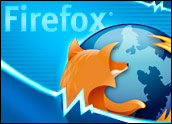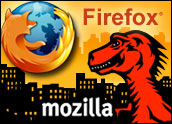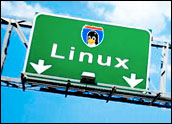
Mercury Computer Systems and Terra Soft Solutions announced today they have joined forces to deliver an advanced dual-PowerPC 970FX-based High Performance Computing cluster node.
The duo announced an alliance to provide the XR9 with its 64-bit Linux OS ‘Y-HPC’ and cluster management suite Y-Imager, pre-installed and configured. The heart of the technology is IBM’s Power Architecture.
Power Architecture is an umbrella term for the PowerPC and POWER4 and POWER5 processors produced by IBM, as well as PowerPC processors from other suppliers. While most consumers associate PowerPC with Apple, Power Architecture is found in the world’s biggest supercomputers to the smallest cell phones.
Kai Staats, co-founder and CEO of Terra Soft Solutions, told LinuxInsider that the XR9 offers board-level design that sets it apart from other Power Architecture solutions.
Comparing XR9 To Apple(s)
Compared to existing 970-based 1U products, Staats said the XR9 offers greater flexibility with adherence to the industry standard extended ATX form factor, greater scalability, and an on-board service processor that reduces CPU load by performing board-level monitoring and control. Staats compares the on-board service processor to a secretary who handles all your everyday tasks so you can focus on more critical issues.
“The XR9 is advantageous in comparison to Apple XServe because the Xserve has a relatively closed proprietary firmware, which means if you want to manipulate or adjust or modify the settings it’s very difficult to do,” Staats said. “The XR9 is designed with upgradable firmware. That means your reliability increases drastically because it’s not reliant on the hard drive.”
Apple could not immediately be reached for comment, but IBM expressed in a statement its enthusiasm for the potential of the system.
To the Test
“Collaboration between members of the Power Architecture community like Mercury and Terra Soft continues to deliver new and innovative solutions to the marketplace,” said Nigel Beck, vice president of Technology Marketing, IBM. “This offering is another example of the benefits of open technology and the flexible business model provided by the Power Architecture.”
Customers like Lockheed Martin, the Department of Defense and NASA have putTerra Soft’s solutions to the test in the past and Staats said his customers are also enthusiastic about the XR9. Now Terra Soft and Mercury are working to ensure the system will be well-supported with an industry-standard Linux operating system and cluster management suite.
“Mercury is embracing the use of systems built from high performance server-class components in places where only higher density form factors could once perform,” said Mark Skalabrin, vice president and general manager, Advanced Solutions business at Mercury Computer Systems. “The XR series represents our first foray into this space, and we expect an exciting array of products to follow.”
Terra Soft’s Challenge
Despite the enthusiasm from its ally and a powerful Big Blue, Terra Soft is facing an uphill battle against what Staats calls Apple’s “huge religious following.” Staats said in the first few weeks after Apple announced its move away from PowerPC he noticed hundreds of the world’s top researchers — who were hard-core PowerPC proponents — begin transitioning their code over to Intel.
Staats said, “Our challenge is getting people’s attention back toward the PowerPC again. It’s not about our loyal customers, it’s about the potential customers we’ve been chasing. Communicating that we have a better solution is a matter of marketing.”




















































